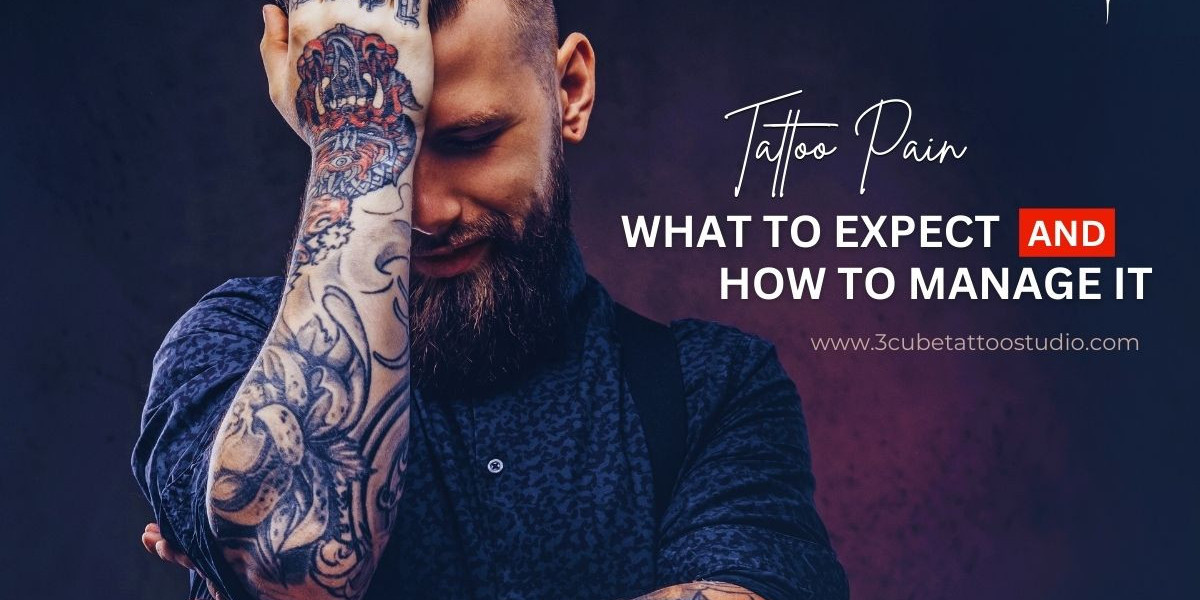Getting a tattoo is an exciting journey, one that combines personal expression with artistic flair. However, a common concern that often arises is the pain associated with tattooing. At 3 Cube Tattoo Studio in Kolkata, we believe in preparing our clients thoroughly for the tattooing experience, including understanding and managing pain. In this comprehensive guide, we will delve into what to expect regarding tattoo pain and share effective strategies for managing it.
Understanding Tattoo Pain
To understand tattoo pain, it's essential to know the basics of the tattooing process. A tattoo is created by inserting ink into the skin using a needle. The needle punctures the skin at a rapid rate, depositing ink into the dermis, the second layer of skin. This process is repeated thousands of times to create the desired design, which inevitably causes some degree of discomfort.
Factors Influencing Tattoo Pain
Factors that can influence the level of pain experienced during a tattoo session can be:
- Location on the Body: Some areas of the body are more sensitive than others. For example, tattoos on bony areas (like the ribs, spine, or ankles) tend to be more painful than those on fleshier parts (like the upper arms or thighs).
- Individual Pain Tolerance: Pain tolerance differs from person to person. What might be excruciating for one person could be merely uncomfortable for another.
- Tattoo Size and Complexity: Larger, more complex tattoos require longer sessions, which can increase discomfort. Simple designs completed quickly might be less painful.
- Tattoo Artist’s Technique: Experienced tattoo artists, like those at 3 Cube Tattoo Studio, often have a lighter touch and more efficient techniques, potentially reducing the pain experienced.
Pain Levels by Body Part
Here’s a quick overview of pain levels by different body parts:
- Least Painful Areas: Upper arm, outer thigh, buttocks, and calves. These areas have more flesh and fewer nerve endings.
- Moderately Painful Areas: Shoulders, forearms, lower back, and upper thighs. These areas have moderate flesh and nerve density.
- Most Painful Areas: Ribs, spine, ankles, feet, and inner arms. These areas are close to bones and have numerous nerve endings.
Managing Tattoo Pain
Here are a few tips for managing the pain before and after the treatment.
Before Your Tattoo Session
Before the tattoo session, you must follow these tips.
- Stay Hydrated: Drink plenty of water in the days leading up to your tattoo session. Hydrated skin is more resilient and can handle the stress of tattooing better.
- Avoid Alcohol and Caffeine: Both alcohol and caffeine can thin your blood, leading to increased bleeding during the tattooing process, which can complicate the process and potentially increase pain.
- Get a Good Night’s Sleep: Being well-rested can significantly improve your pain tolerance. Ensure you get a full night’s sleep before your appointment.
- Eat a Balanced Meal: Having a nutritious meal before your session can help maintain your energy levels and reduce the likelihood of feeling faint or dizzy.
During Your Tattoo Session
During the session, you must be:
- Wear Comfortable Clothing: Depending on the location of your tattoo, wear clothing that allows easy access to the area and keeps you comfortable throughout the session.
- Stay Relaxed: Tension can amplify pain. Practice deep breathing techniques to stay calm and relaxed during the process.
- Communicate with Your Artist: At 3 Cube Tattoo Studio, our artists are experienced and understanding. If you need a leave, don’t hesitate and ask for it. Keeping an open line of communication can make the experience more manageable.
- Use Numbing Creams: If you’re particularly concerned about pain, discuss the use of numbing creams with your tattoo artist. These can be applied to the skin to reduce sensitivity during the tattooing process.
After Your Tattoo Session
These aftercare tips can help you manage the pain.
- Follow Aftercare Instructions: Proper aftercare is crucial for healing and can also help manage pain post-tattoo. Follow the aftercare tips given by your tattoo artist.
- Keep the tattoo Clean: Clean the tattooed area gently with lukewarm water and mild soap to prevent infection, which can cause additional pain.
- Moisturize Regularly: Keeping the tattoo moisturized can prevent itching and irritation. Use a fragrance-free, gentle moisturizer recommended by your tattoo artist.
- Avoid Tight Clothing: Tight clothing can rub against the new tattoo, causing irritation and pain. Opt for loose, breathable fabrics.
- Stay Hydrated and Eat Well: Continue to drink plenty of water and eat nutritious meals to support the healing process.
Pain Relief Methods
These pain relief methods can help manage the pain.
- Over-the-Counter Pain Relievers: Medications like ibuprofen or acetaminophen can help alleviate pain and reduce swelling. However, always consult with your tattoo artist or a healthcare professional before taking any medication.
- Cold Compresses: Applying a cold compress to the tattooed area can help reduce swelling and numb the area, providing temporary relief from pain.
- Rest: Give your body time to heal. Avoid strenuous activities that could stress the tattooed area.
When to Seek Medical Advice
While some discomfort is normal after getting a tattoo, severe or persistent pain could indicate an infection or other complications. Contact a healthcare specialist if you notice:
- Severe swelling or redness
- Pus or unusual discharge from the tattoo
- Fever or chills
- Intense pain that doesn't improve with standard pain relief methods
Conclusion
Tattoo pain is a natural part of the process, but it is manageable with the right preparation and care. At 3 Cube Tattoo Studio in Kolkata, we are dedicated to providing a comfortable and safe tattooing experience for all our clients. By understanding what to expect and how to manage pain effectively, you can focus on the excitement of getting your new tattoo and the joy of seeing it come to life.
Remember, everyone’s pain experience is unique, and what works for one person might not work for another. Listen to your body, communicate with your tattoo artist, and don’t be afraid to take steps to ensure your comfort.



